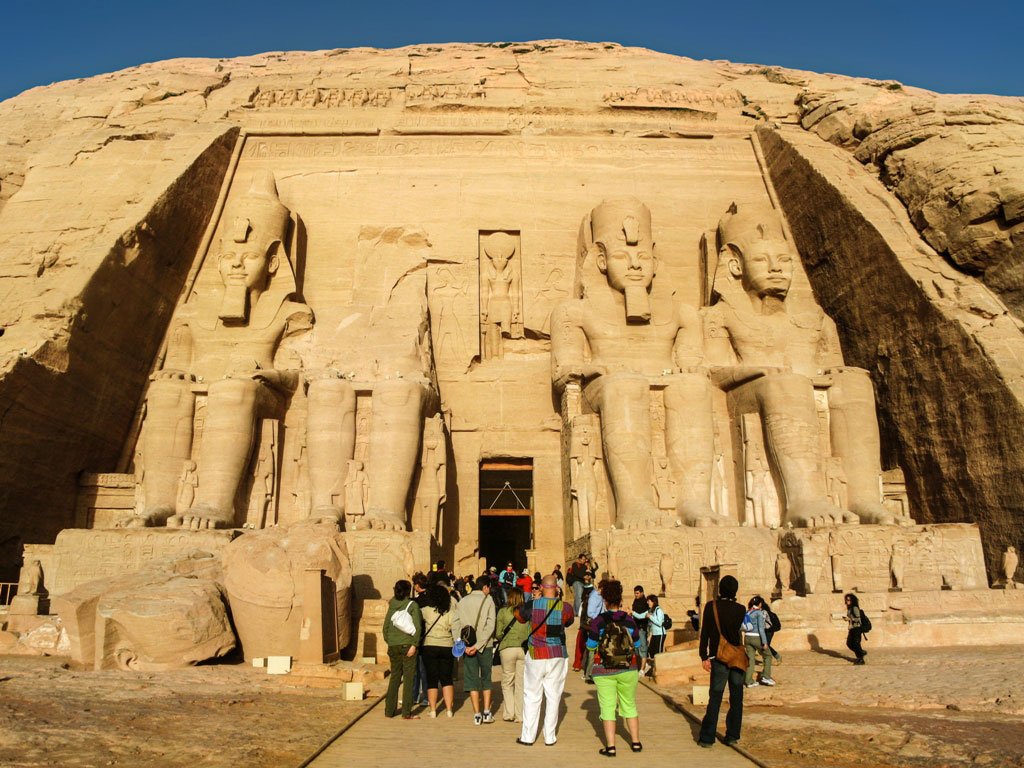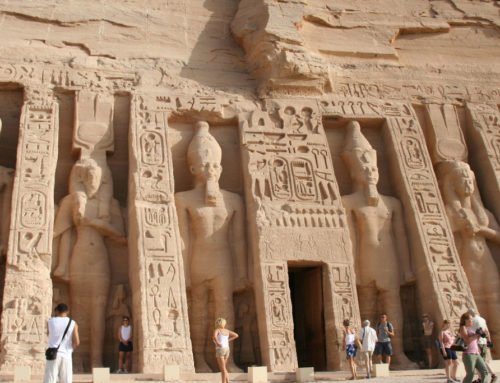Overview
- Features: Temple dedicated to the gods, Amun of Thebes, Ptah of Memphis and Ra-Harakhty of Heliopolis, and to honour Ramses II
- Opening Times: 6am to 6pm (Summer), 6am to 5pm (Winter); daily
- Best Time to Visit: Early morning
- Duration: 1 to 2 hours
- Travelled By: On the Go Tours
- Cost: LE50
- Address: Abu Simbel, Egypt
- Type: Temple
Author Reviews[display_rating_item_results rating_form_id=”2″ rating_entry_ids=”1″ show_category_filter=”false” show_options=”true” result_type=”star_rating” preserve_max_rating=”true” show_title=”false” show_count=”false” ]
Total Rating: [display_rating_result rating_form_id=”2″ show_count=”false” show_rich_snippets=true] [accordions load=”1″] [accordion title=”User Reviews” last] [display_rating_item_results rating_form_id=”5″ show_options=”true” result_type=”star_rating” preserve_max_rating=”true” show_title=”false” show_count=”true” show_rich_snippets=true] [/accordion] [accordion title=”Add Review”][display_rating_form show_email_input=”true” show_comment_textarea=”true” show_name_input=”true” rating_form_id=”5″] [/accordion] [/accordions]
Summary
The famous Temple of Ramses II stands like a mirage in the middle of the Nubian desert overlooking Lake Nasser. Carved out of the mountain on the west bank of the Nile between 1274 and 1244 BC, this is one of the most popular temples in Egypt and throngs of visitors come to visit it daily.
Temple of Ramses II
The famous Temple of Ramses II stands like a mirage in the middle of the Nubian desert overlooking Lake Nasser. Carved out of the mountain on the west bank of the Nile between 1274 and 1244 BC, this is one of the most popular temples in Egypt and throngs of visitors come to visit it daily.
15 Interesting Facts about the Temple of Ramses II
- Although dedicated to the patron deities of Egypt’s great cities – Amun of Thebes, Ptah of Memphis and Ra-Harakhty of Heliopolis – the Great Temple was built to honour Ramses II
- The Temple of Ramses II was buried under the sand for centuries until it was re-discovered by Swiss explorer Jean Louis Burckhardt in 1813
- In the 1960s, as Lake Nasser threatened to engulf the temples, UNESCO cut them from the mountain and moved them to an artificial cliff 210m (688 ft) back from and 65m (213 ft) above their original position
- At a cost of about US$40 million, the temple was cut up into more than 2000 huge blocks, weighing from 10 to 40 tonnes each
- The star attractions of the temple are the façade, hypostyle hall and inner sanctum
- The 33-m (108-ft) high façade, with four colossal enthroned statues of Ramses II wearing the double crown of Upper and Lower Egypt, was intended to impress and frighten Egypt’s enemies
- Guarding the entrance to the temple, the colossal statues of Ramses II are more than 20m high; the broken colossus lost its head in an earthquake in 27 BC
- The colossal statues are accompanied by smaller statues of the pharaoh’s mother Queen Tuya, his wife Nefertari and some of his favourite children
- Above the entrance, between the central throned colossi, is the figure of the falcon-headed god Ra-Harakhty
- The roof of the first hall is decorated with vultures, which are protective figures symbolising the goddess Nekhbet, and is supported by eight columns, each fronted by an Osiride statue of Ramses II
- Reliefs on the walls depict the pharaoh’s prowess in battle and Ramses making offerings to his deified self
- A depiction of the famous battle of Qardesh c. 1275 BC (now in Syria) is on the right hand wall; it is dominated by a famous relief of Ramses in his chariot, shooting arrows at his fleeing enemies
- The next hall, the four-columned vestibule is adorned with scenes of Ramses and Nefertari making offerings to Amun and Ra-Harakhty
- The sacred inner sanctuary has statues of Ramses and the triad of gods of the Great Temple sitting on their thrones; these statues were once covered in gold
- On 22 February and 22 October every year, the first rays of the rising sun penetrate the temple door and illuminate the statues in the inner sanctuary. Only Ra-Harakhty, Ramses II and Amun are illuminated; Ptah, to the left, is never illuminated



